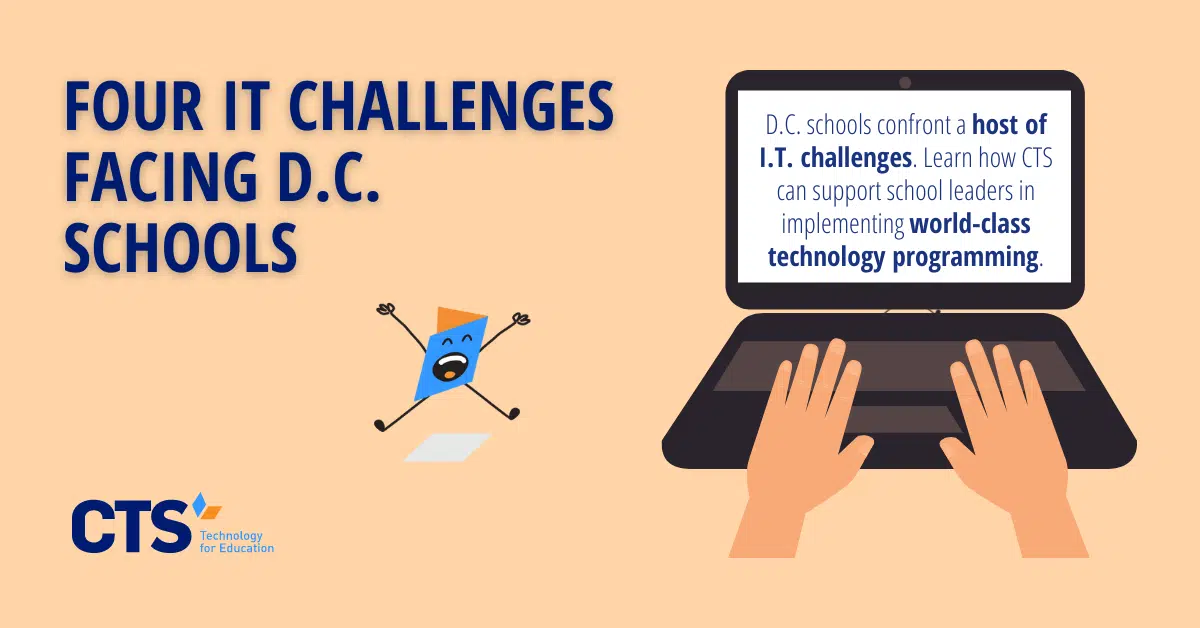D.C. schools require bandwidth that meets their current needs.
As D.C. schools have increasingly embraced one-to-one student-device ratios, interactive SMART boards, and other educational technology products, many schools still lack the bandwidth required to support widespread technology use. Even in schools in which every student receives their own device, low quality or minimal bandwidth can frustrate attempts to integrate technology into daily instruction.
Rather than adding value to students’ learning, lackluster bandwidth can instead slow down the learning process, ultimately undermining attempts to improve student achievement. For example, if a class of thirty students, each with their own device, is told to conduct online research for an upcoming assignment, they might spend precious instructional minutes waiting for pages to load, images to download, or logging in to their school-issued device. Likewise, teachers in schools with low-quality bandwidth can struggle to quickly access online instructional platforms, log in to student information systems, or download large email attachments containing student data.
Without the requisite bandwidth to support their technology programming, schools in D.C. and across the country face a choice between low-tech. learning that foregoes the advantages of educational technology, and an expensive technology program that fails to reach its full potential.
Beyond the here-and-now, these schools also need bandwidth that scales with student population growth.
Exacerbating a lack of bandwidth, many schools in D.C. can struggle to meet the increased technology demands of growing student populations. While a school may have been able to support the enrollment of 100 students, for instance, that same school’s technology infrastructure may begin to buckle under the weight of each successive grade level. With each new class of students who log on to the school’s wireless network, the network’s burden increases and, ultimately, can begin to slow down or crash in extreme cases.
These developments not only impact the school’s technology programming but also lead to increased frustration among teachers and support staff members, not to mention students, who can quickly become disruptive without an activity to capture their attention. In this sense, ensuring the school’s technology programming keeps pace with demand is both an operational and school culture challenge.
For schools conducting remote learning, device equity remains an issue.
Like other schools across the country, D.C. schools also confronted issues of device equity when the pandemic first caused school closures in March 2020. While some students may have had access to at-home wireless internet service or their own personal device, other students couldn’t get online outside of the school building and missed out on valuable instructional time.
As with individual school buildings, some students’ homes lacked the technical infrastructure necessary to support multiple “remote learners” at once, leaving students in the digital “slow lane.” With only limited bandwidth support, these students could encounter “poor connection” messages that prevented them from fully engaging in videoconferencing or other at-home learning opportunities. Frustrated with their device’s sluggishness, many of these students could understandably begin to disengage with the day’s content, foregoing classwork in favor of television or video games with little academic value.
As technology use becomes more central to instruction in D.C. schools, administrators also need support sourcing enough devices for their students.
Even as school leaders recognize the need for more student devices post-pandemic, they can also struggle to procure enough hardware for their school’s students and staff members. Given the pandemic’s strain on global supply chains, many educational technology products that were once readily available have become increasingly scarce or expensive. Schools that could ill afford a one-to-one student-device ratio before March 2020 are likely to encounter still higher device prices as suppliers struggle to meet consumer demand.
At CTS, we help schools in D.C. and around the country tackle their most complex IT challenges.
Our team recognizes the technology challenges facing schools in D.C. and across the country. When the pandemic first began to impact our partner schools, CTS sprang into action, deploying decades of experience in the educational technology space to help our schools source, set up, and distribute devices to students.
However, as schools transition back to in-person instruction, technology is likely to play an increasingly central role. Videoconferencing, online instructional platforms, asynchronous learning, and other hallmarks of remote instruction are likely to be woven into traditional, in-person learning to an unprecedented degree, placing additional stress on schools’ technology infrastructure.
By working with an experienced managed IT provider like CTS, schools can focus on instruction while we take care of the technology. With transparently priced service packages, on-call support for common technology issues, and unparalleled on-site engagement, our team can take your school’s technology programming to the next level, complementing your school’s instructional design. Contact us today to learn more about our services and how we can help your school accomplish its unique mission.




